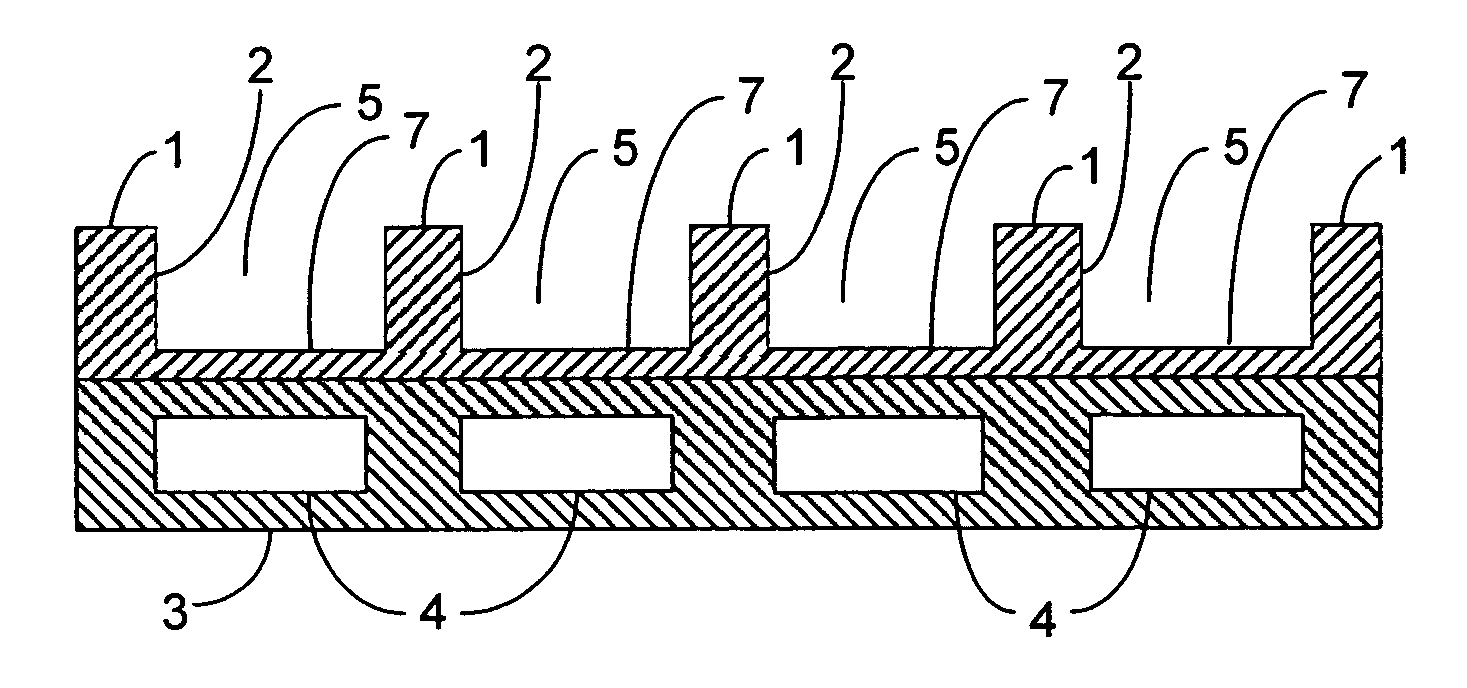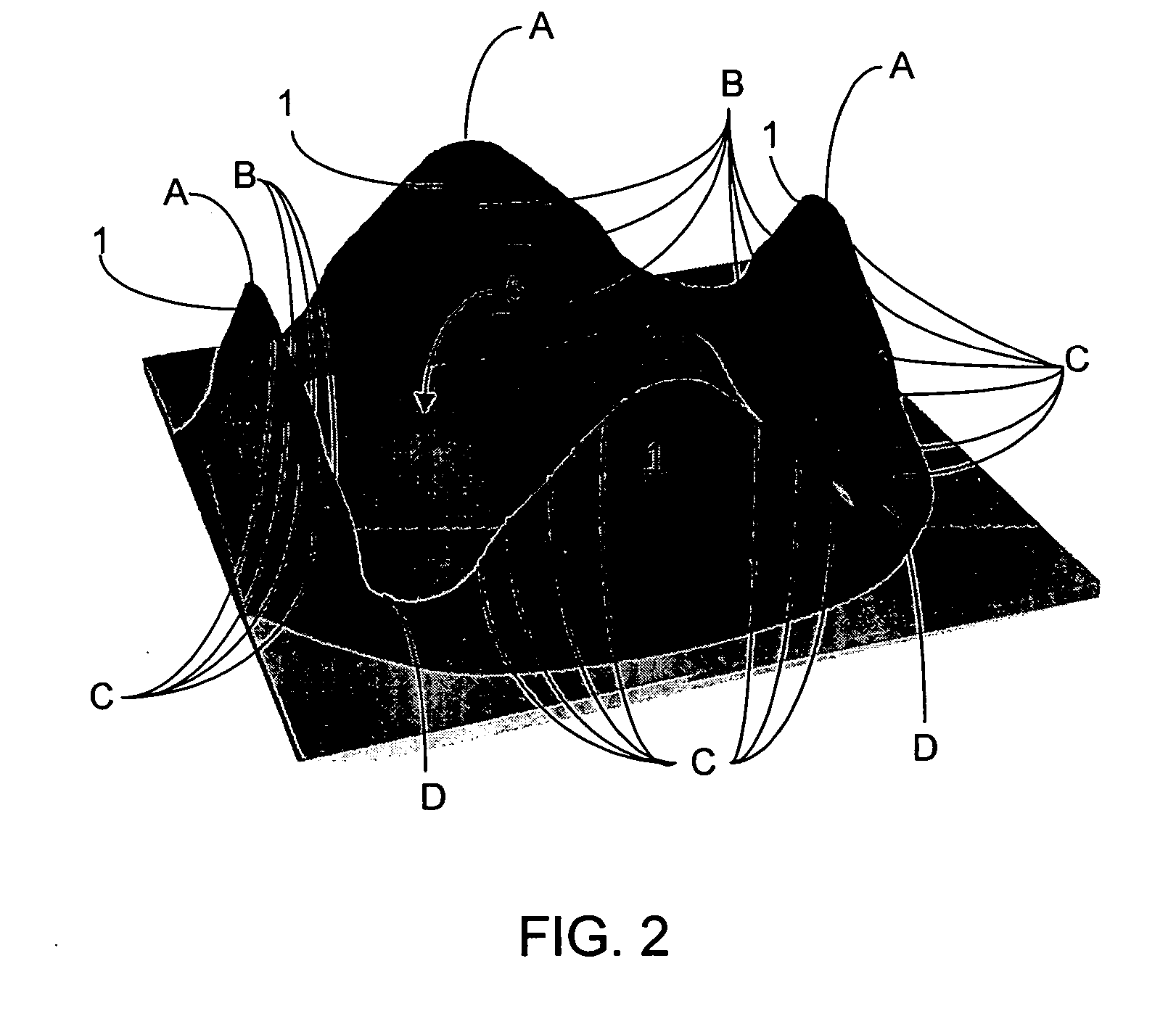Apparatus and method for manufacturing positive or negative microlenses
a microlens and array technology, applied in the field of microlens array structure and manufacturing methods, can solve the problems of increasing the crosstalk between adjacent pixels, increasing the difficulty of providing a microlens capable of focusing incident light rays onto the photosensitive regions, and small charge accumulation area in individual pixels in the array, so as to achieve the effect of small radius
- Summary
- Abstract
- Description
- Claims
- Application Information
AI Technical Summary
Benefits of technology
Problems solved by technology
Method used
Image
Examples
Embodiment Construction
[0039] Exemplary embodiments of the invention affect or adjust microlens shapes or optical properties during lens formation (e.g., heating of lens material thereby causing lens material to flow or settle into an intended microlens shape). Microlens frames and / or other structures are used to affect or alter the flow behavior of lens material to be different than otherwise would occur without use of a microlens frame or other flow behavior altering structures.
[0040] According to the invention, the focal characteristics of a microlens can be adjusted by, among other things, forming boundary walls around lens materials to contain / limit the outward flow of lens material. This adjusts microlens flow behavior, e.g., increasing microlens height or defining a perimeter of the microlens structures. Boundary walls can be formed by formation of cavities or frame sidewalls with microlens material deposited therein. Post-flow microlens shapes can also be adjusted or affected by use of structures...
PUM
| Property | Measurement | Unit |
|---|---|---|
| temperature | aaaaa | aaaaa |
| thickness | aaaaa | aaaaa |
| thickness | aaaaa | aaaaa |
Abstract
Description
Claims
Application Information
 Login to View More
Login to View More - R&D
- Intellectual Property
- Life Sciences
- Materials
- Tech Scout
- Unparalleled Data Quality
- Higher Quality Content
- 60% Fewer Hallucinations
Browse by: Latest US Patents, China's latest patents, Technical Efficacy Thesaurus, Application Domain, Technology Topic, Popular Technical Reports.
© 2025 PatSnap. All rights reserved.Legal|Privacy policy|Modern Slavery Act Transparency Statement|Sitemap|About US| Contact US: help@patsnap.com



